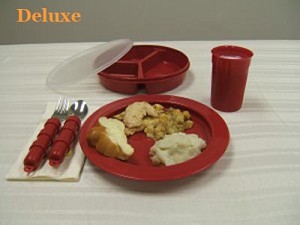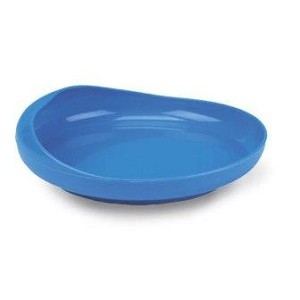- Providing Helpful Healthcare Products Since 1999 | Our Hours: 8 AM - 5 PM CST Mon - Fri
- +1-877-750-0376
High-contrast utensils help those with Alzheimer’s
Fun Christmas Gifts
December 23, 2013Bathing loved one with Alzheimer’s can be easier
December 31, 2013High-contrast utensils help those with Alzheimer’s
Here are examples of eating utensils we offer for those with Alzheimer's disease. These utensils offer high contrast and are adaptively shaped for ease of use.
We hope everyone is still chowing down on their favorite holiday dishes during this Christmas season. For those in our families who have Alzheimer’s disease, eating can be difficult for a number of reasons. Here are a few ideas to make using eating utensils easier and less complicated for those who have Alzheimer’s and/or dementia.
First, you need to determine what challenges your loved one with Alzheimer’s faces while eating, especially if they have recently begun to lose weight.
Research says high-contrast utensils help
According to WebMD, research shows that normal, visually low-contrast dishes and eating utensils can confuse people with Alzheimer’s, who may not be able to distinguish a white plate from a white table or milk in a white cup. Using high-contrast dishes and utensils helps them to distinguish objects and has been shown to increase food intake by 24 percent and liquid intake by 84 percent in study participants.
Enjoy a complete set of bright red dishes
For this purpose, we sell Redware Dishes, which are brightly colored red dishes and eating utensils that are also adaptive. The built up fork and spoon make gripping physically easier and less complicated. The Basic Set comes with a Scooper Dish with raised sides to make scooping food easier and a non-skid base to prevent sliding. The Deluxe Set comes instead with a Scoop Dish with a raised lip similar to the Scooper Dish and a partitioned plate that also makes scooping food easier. Both sets also come with a bright red cup.
Ergonomically shaped utensils
Another brightly colored adaptive eating device is the Evo OT Ware Utensil Set. This utensil set is made of bright red ceramic and is ergonomically shaped, making it perfect for those who have arthritis or carpal tunnel. The handle is textured for easy gripping. The set comes with a knife, spoon and fork and is made for the right hand.
Blue also offers great contrast
The Blue Scooper Plate is also very bright and thus offers high contrast. Like the Redware Scooper Plate, the Blue Scooper Plate features taller edges and has a reverse curve on one side. Scoop food against the reverse curve to make food naturally roll back onto the spoon or fork instead of rolling off the plate.
The above dishes and utensils not only offer high contrast, but are also ideal for those who struggle with eating either due to physical limitations or the inability to make complex manipulations of ordinary silverware.



